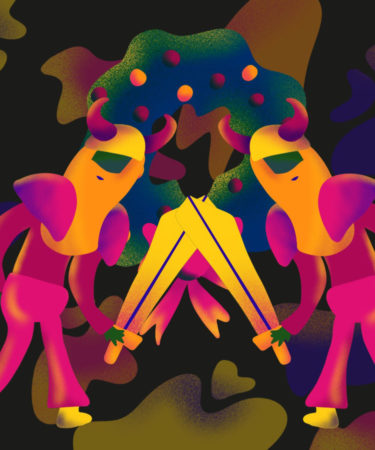Along with the Yule log, mistletoe, tree decorating, and wreaths, Christmas ales are among the many winter rituals that originated as pagan traditions. In fact, brewing beer for the winter celebration became such an integral part of Viking society that failing to produce a holiday brew eventually became illegal.
Long before Christianity made its way to the native Germanic peoples, Norwegians celebrated the winter solstice by brewing and drinking beer to honor their Norse gods. To celebrate “Jul,” a Norwegian word that in modern vernacular refers to the Christmas season, Vikings brewed and consumed strong, barley-based beer while in the throes of winter’s coldest and dreariest months. They also used the ale to make offerings in hopes to entice the gods to bring back the summer sun.
According to “The Geography of Beer,” King Haakon the Good, who ruled from 934 to 961, later used the ancient Jul celebration to push a Christian agenda. As part of his efforts to introduce Christianity to the Norwegian people, King Haakon the Good implemented a pagan-meets-Christian mash-up, making it a law to celebrate Christmas with beer. Those who didn’t have beer at their Christmas feast were issued a fine. Norway became Christianized in the 11th century.
Centuries later, the Norwegian legislative assembly, the Gulating, issued the Gulating Laws, officially formalizing King Haakon’s beer decree. The laws required every household to brew Christmas beer, and outlined penalties to those who failed to do so. Skipping out on brew day became a punishable act.
A rough translation of a handwritten Gulating manuscript, currently held in Copenhagen’s Royal Library, reads as follows:
“Yet another beer brew we are required to make, man and wife from equal amounts of malts, and to bless it Christmas night in thanks to Christ and St. Mary, for a good year and peace.
If this is not done, three marks must be paid to the bishop. But if someone sits three winters without doing so, or cannot pay the fees that we have added for our religion, and this can be proven, then he has forfeited every penny of his worth. The king shall have half, and the bishop the other half. But he may confess his sins and make church penance and stay in Norway. If he will not he shall leave the realm of our king.”
Although the stipulations were admittedly bleak, the original Christmas beers were somewhat similar in sentiment to today’s winter warmers and seasonal spiced ales. Brewers were required to use only the best grain available from the farm. The ability to brew a novel and popular beer was associated with high status, so brewers often experimented with adding new flavors, such as juniper and other herbs. And the stronger the beer, the better, so by using syrup, tobacco, and sugar, brewers could create more intense flavors.
Nearly every Norwegian brewery today follows this tradition, albeit on more modern terms, during the holiday season by producing an annual “Juleøl,” which translates to “drink Christmas.” The seasonal style continues to be a source of pride among Norwegian brewers large and small.
This holiday season, raise your spiced Christmas ale or favorite nondenominational winter beer in gratitude for those who set holiday beer traditions in motion. Violent the Vikings may have been, but at the very least, they cared a great deal about their winter beer.
